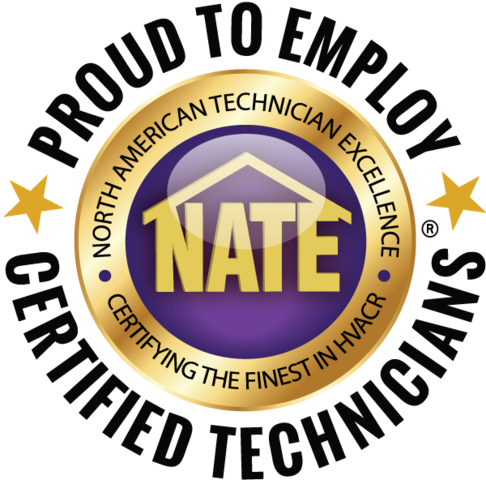A reliable furnace is essential for maintaining comfort in your home, especially during cold seasons. However, furnaces do not last forever. Over time, they can become inefficient or break down, leading to discomfort and higher energy bills. Knowing when it is time for a furnace replacement can save you from unexpected breakdowns and ensure your home remains warm and cozy.
Key Indicators That It's Time for Furnace Replacement
Recognizing when your furnace needs replacing can prevent costly repairs and ensure consistent heating. Here are key indicators:
1. Age of the Furnace: Most furnaces have a lifespan of 15-20 years. If your furnace is within this age range, it may be time to consider a replacement. Older units are less efficient and more prone to breakdowns.
2. Rising Energy Bills: An unexpected increase in your energy bills can indicate that your furnace is no longer operating efficiently. Over time, wear and tear force the furnace to work harder to maintain the same level of heating, leading to higher energy consumption.
3. Frequent Repairs: If you find yourself calling for repairs frequently, it might be more cost-effective to replace the furnace. Frequent repairs are a sign that the furnace is nearing the end of its life, and replacing it could save you money in the long run.
4. Uneven Heating: If some rooms are too hot while others are too cold, your furnace may no longer be distributing heat evenly. This inconsistency can be a sign that the furnace is struggling to keep up with your home’s heating demands.
5. Strange Noises: Unusual noises such as banging, rattling, or squealing can indicate serious problems. These sounds often mean that internal components are failing, and it might be time for a new unit.
6. Yellow Burner Flame: A furnace with a yellow burner flame instead of a blue one can indicate a carbon monoxide issue. This is a serious safety hazard and often means that the furnace needs to be replaced.
Benefits of Upgrading to a New Furnace
Upgrading to a new furnace brings numerous benefits that go beyond just heating your home. Here are some key advantages:
1. Increased Efficiency: Modern furnaces are designed to be more energy-efficient than older models. They use less energy to produce the same amount of heat, which can lower your monthly energy bills and reduce your carbon footprint.
2. Improved Comfort: Newer furnaces provide more consistent and reliable heating. Advanced technology ensures even distribution of heat throughout your home, eliminating cold spots and maintaining a comfortable temperature.
3. Enhanced Safety: Older furnaces pose risks such as carbon monoxide leaks and fire hazards. A new furnace includes safety features like sealed combustion and advanced monitoring systems, ensuring your family’s safety.
4. Quieter Operation: New furnaces operate much more quietly compared to older units. This improvement in noise reduction increases overall comfort and provides a more peaceful living environment.
5. Better Air Quality: Modern furnaces are equipped with better filtration systems that remove more dust, allergens, and pollutants from the air. This results in improved indoor air quality, promoting a healthier living space.
How to Choose the Right Furnace for Your Home
Choosing the right furnace for your home involves several important considerations. Here are steps to help you make the best decision:
1. Assess Your Heating Needs: The size of your home, climate, and insulation levels play a significant role in determining the furnace size you need. A furnace that is too small won’t provide adequate heat, while one that is too large can lead to inefficiency.
2. Consider Fuel Type: Furnaces can run on various fuels, including natural gas, oil, and electricity. Evaluate which fuel type is most available and cost-effective in your area. Each type has its pros and cons, so choose one that fits your needs and budget.
3. Look at Efficiency Ratings: Furnaces come with efficiency ratings, often measured as Annual Fuel Utilization Efficiency (AFUE). Higher AFUE ratings indicate greater efficiency. Opt for a furnace with a high AFUE rating to maximize energy savings.
4. Check Compatibility with Existing Systems: Ensure the new furnace is compatible with your home’s existing ductwork and HVAC system. This avoids additional costs and complications during installation.
5. Set a Budget: Determine how much you are willing to spend on a new furnace. While higher efficiency units may have a higher upfront cost, they can save money in the long run through energy savings.
6. Consult Our Professionals: Our professionals can assess your home’s specific needs and provide recommendations. They can help you choose a furnace that offers the best balance of efficiency, cost, and performance.
Conclusion
Recognizing the signs that indicate it’s time for a furnace replacement and understanding the common issues with aging furnaces can help you make informed decisions. Upgrading to a new furnace not only improves your home's comfort but also enhances efficiency and safety. Choosing the right furnace involves assessing your heating needs, considering fuel types, looking at efficiency ratings, and consulting with trusted professionals.
For expert guidance and reliable furnace replacement in Centerville, contact S.O.S. Heating & Cooling. Our skilled technicians are ready to help you choose the best furnace for your home and ensure a seamless installation process. Upgrade your furnace today to ensure your home’s comfort and safety!
















